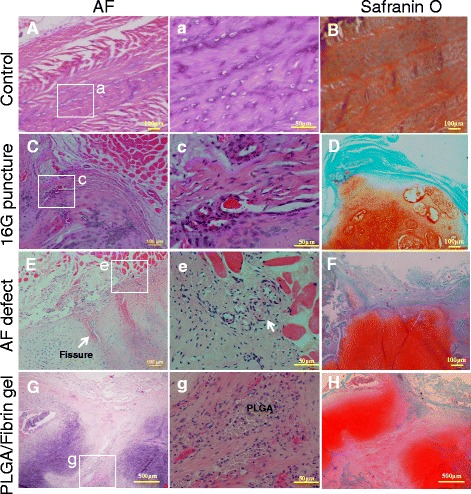Fig. 8.

Hematoxylin/eosin (A, C, E, and G; a, c, e, and g) and safranin-O (B, D, F, and H) staining of the annulus fibrosus (AF) at 6 months after surgery. The intact AF displayed a multi-lamellar structure rich in proteoglycans, as shown by strong safranin-O staining (A, B, (a): different magnification). A disorganized, extensive scar tissue with abundant safranin-O staining was evident at the puncture site (C, D). Small blood vessels were variably evident in the outer AF (c). The annular defect was replenished by pronounced fibrocartilaginous tissue rich in proteoglycans. Small fissures were discernible as penetrations into the repair tissue at a limited depth (E, F). Blood vessels were present in the layer between the periannular muscle and the outer AF (e). Clusters of newly regenerated tissue formed a concave channel along the track of the AF defect (G) and were well integrated with the inner part of the AF (g). The proteoglycan content was markedly reduced in the AF defect track, except for a strongly safranin-O-stained region at the sites of cartilaginous tissue (H). White boxes indicate areas of higher magnification
